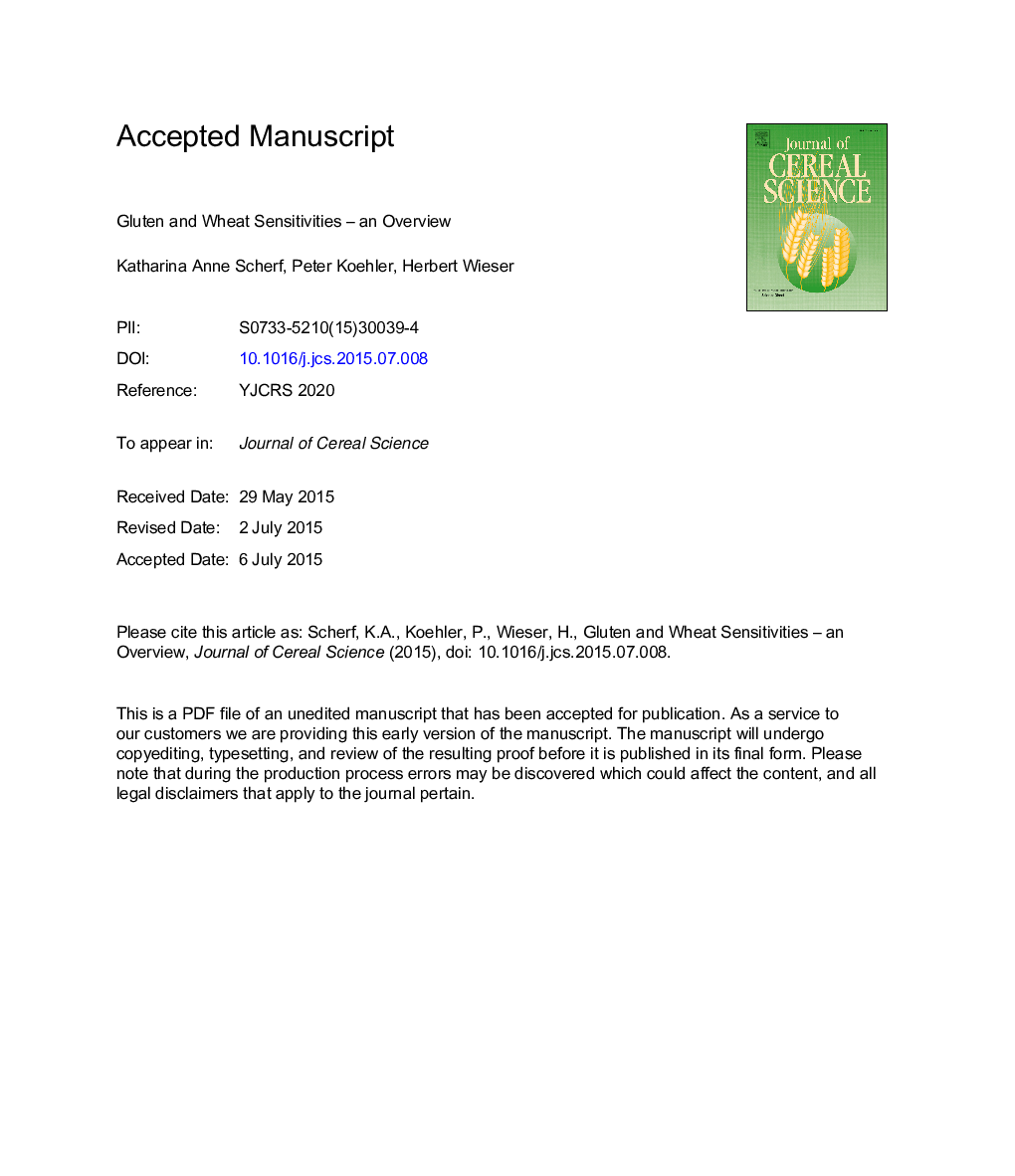| Article ID | Journal | Published Year | Pages | File Type |
|---|---|---|---|---|
| 6377745 | Journal of Cereal Science | 2016 | 42 Pages |
Abstract
Wheat products are important staple foods worldwide. However, a small portion of the population has to avoid wheat-containing foods because of harmful immune responses. Countless studies have demonstrated that the storage (gluten) proteins of wheat are major causative agents for wheat-dependent immune-mediated disorders. The unique structural features of gluten proteins are long repetitive amino acid sequences rich in glutamine and proline. These sequence sections are involved in most wheat sensitivities. Corresponding homologous sequence sections of rye and barley proteins may also be harmful, but relevant studies are rare. Wheat sensitivities can be classified into three main forms: autoimmunogenic sensitivities including coeliac disease, dermatitis herpetiformis, and gluten ataxia; allergic sensitivities including immediate wheat allergy, wheat-dependent exercise-induced anaphylaxis, respiratory allergy, and contact urticaria; and non-coeliac gluten sensitivity. The presented overview summarizes our current knowledge of gluten protein structures related to wheat sensitivities and the epidemiological, clinical, and pathogenic differences between these immune-mediated disorders.
Keywords
RCDIELATINon-coeliac gluten sensitivityLMWNCGSDermatitis herpetiformisMMWHMWTG2ESPGHANTLRGFDWheat allergyHuman leukocyte antigenHLAimmunoglobulin interferonIFNinterleukinCoeliac diseaseTissue transglutaminaseradioallergosorbent testContact urticariaToll-like receptorRASTGluten-free dietIntraepithelial lymphocyterefractory coeliac diseaseglutenin subunitHigh-molecular-weightlow-molecular-weightGluten
Related Topics
Life Sciences
Agricultural and Biological Sciences
Agronomy and Crop Science
Authors
Katharina Anne Scherf, Peter Koehler, Herbert Wieser,
